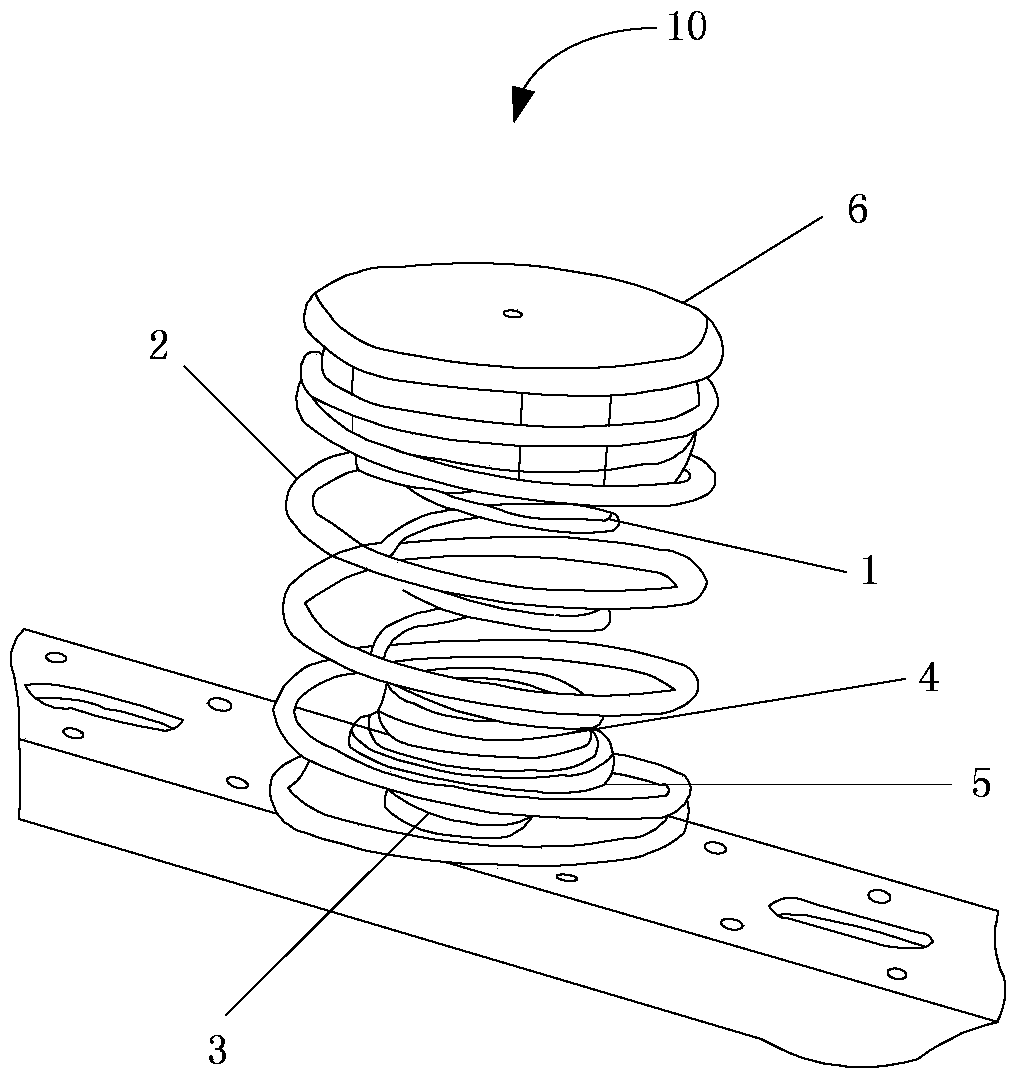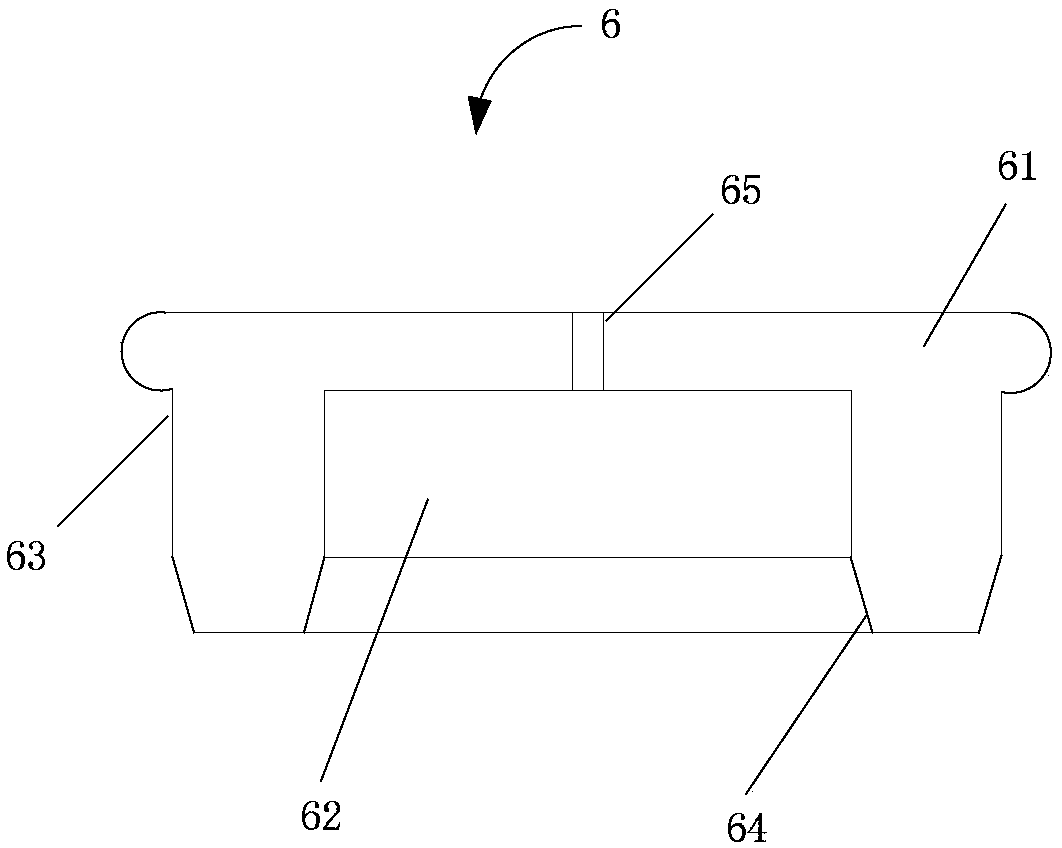Intelligent adjusting supporting module and automatic adjusting bed
An intelligent adjustment and support module technology, applied in mattresses, spring mattresses, other seating furniture, etc., can solve problems such as the inability to automatically adjust the physiological curve of the spine, and achieve the effect of reducing noise
- Summary
- Abstract
- Description
- Claims
- Application Information
AI Technical Summary
Problems solved by technology
Method used
Image
Examples
Embodiment 1
[0053] Embodiment 1: This embodiment is an improved solution of the present invention. Some mattresses in existing designs use independent spring devices, but the inventors have found that when using independent springs one by one, if springs that meet the requirements are set, the coefficient of elasticity of each spring may be relatively high, which will cause the line of the spring to Higher requirements in terms of diameter and manufacturing process, and higher cost. Therefore, this scheme adopts the structure of "spring in spring", such as Figure 4 As shown, there are two springs to form a spring group—a large spring (outer coil spring 2) and a small spring (induction spring 1). The diameter of the large spring is larger than the sensing panel, and each sensing panel is wrapped inside the spring. The sensing panel does not come into contact with the big spring; in addition, an independent small spring is set on each sensing panel. The height of the small spring is sligh...
Embodiment 2
[0057] Embodiment 2: For the technical solution of Embodiment 1, when the user is standing, sitting on the mattress, jumping on the mattress or doing sports, when the force bearing area is small, all the force may be pressed on the force bearing area. In the case of a few springs below the point, the springs will be damaged or the elastic coefficient of the spring must be increased during design, but an excessive elastic coefficient will lead to a decrease in user experience. Therefore, in the present embodiment, the large springs (outer coil springs 2) are connected together through a network connection structure (the gaps of the outer coil springs 2 arranged longitudinally can be connected with the connecting ring 40, and then the connecting buckle 50) to form a spring group, such as Figure 5 As shown, in this way, when the human body stands, sits hard or does sports, it will not appear that only two or three springs are in contact, but the entire large spring group is stres...
Embodiment 3
[0061] Embodiment 3: This embodiment is the most basic spring mattress structure, and the mattress technology of this embodiment is simple, and the production cost is relatively low. Set independent springs on the surface of hard support materials, such as Figure 6 , each spring is located on each sensing panel and connected with the sensor. The spring can be a tower spring, a straight spring or a spring with a wide mouth and a narrow body, all of which can be selected. The elastic coefficient of the spring should not be too large, too large elastic coefficient will cause the mattress to be too hard and cause uncomfortable sleeping; at the same time, the elastic coefficient of the spring should not be too soft, if it is too soft, springs will appear when the human body stands or sits on the mattress. It has shrunk to the lowest point and has the feeling of touching a hard object, causing discomfort in sleeping. Therefore, the elastic coefficient and height of the spring are...
PUM
 Login to View More
Login to View More Abstract
Description
Claims
Application Information
 Login to View More
Login to View More - R&D
- Intellectual Property
- Life Sciences
- Materials
- Tech Scout
- Unparalleled Data Quality
- Higher Quality Content
- 60% Fewer Hallucinations
Browse by: Latest US Patents, China's latest patents, Technical Efficacy Thesaurus, Application Domain, Technology Topic, Popular Technical Reports.
© 2025 PatSnap. All rights reserved.Legal|Privacy policy|Modern Slavery Act Transparency Statement|Sitemap|About US| Contact US: help@patsnap.com



